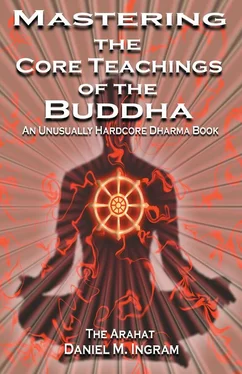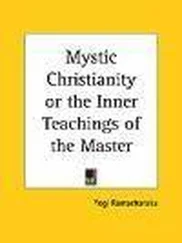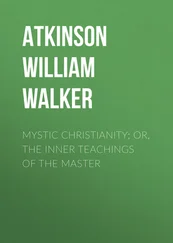Daniel Ingram - Mastering the Core Teachings of Buddha - An Unusually Hardcore Dharma Book
Здесь есть возможность читать онлайн «Daniel Ingram - Mastering the Core Teachings of Buddha - An Unusually Hardcore Dharma Book» весь текст электронной книги совершенно бесплатно (целиком полную версию без сокращений). В некоторых случаях можно слушать аудио, скачать через торрент в формате fb2 и присутствует краткое содержание. Год выпуска: 2009, ISBN: 2009, Издательство: Aeon Books, Жанр: Старинная литература, на русском языке. Описание произведения, (предисловие) а так же отзывы посетителей доступны на портале библиотеки ЛибКат.
- Название:Mastering the Core Teachings of Buddha - An Unusually Hardcore Dharma Book
- Автор:
- Издательство:Aeon Books
- Жанр:
- Год:2009
- ISBN:9781904658405
- Рейтинг книги:5 / 5. Голосов: 1
-
Избранное:Добавить в избранное
- Отзывы:
-
Ваша оценка:
- 100
- 1
- 2
- 3
- 4
- 5
Mastering the Core Teachings of Buddha - An Unusually Hardcore Dharma Book: краткое содержание, описание и аннотация
Предлагаем к чтению аннотацию, описание, краткое содержание или предисловие (зависит от того, что написал сам автор книги «Mastering the Core Teachings of Buddha - An Unusually Hardcore Dharma Book»). Если вы не нашли необходимую информацию о книге — напишите в комментариях, мы постараемся отыскать её.
Mastering the Core Teachings of Buddha - An Unusually Hardcore Dharma Book — читать онлайн бесплатно полную книгу (весь текст) целиком
Ниже представлен текст книги, разбитый по страницам. Система сохранения места последней прочитанной страницы, позволяет с удобством читать онлайн бесплатно книгу «Mastering the Core Teachings of Buddha - An Unusually Hardcore Dharma Book», без необходимости каждый раз заново искать на чём Вы остановились. Поставьте закладку, и сможете в любой момент перейти на страницу, на которой закончили чтение.
Интервал:
Закладка:
“awareness” is nothingness. It is not even this. Remember, no sensation can observe another, so anything you can think of cannot be said to be
“awareness.”
By simply paying close attention to every instant that nothingness or equanimity is perceived, and with precise attention to the exact arising and passing of each of these, that these transient moments do not satisfy, and that these neither can impute nor can be a separate self, the three 162
The Formless Realms
illusions can begin to be penetrated in the highest state in which this can be accomplished. As this is a particularly subtle business, the meditator may also leave the jhana and begin insight practice in the afterglow of this state as before. Strobing sensations of nothingness are more likely to arise during the progress of insight in the stage called High Equanimity for those with very strong concentration skills.
NEITHER PERCEPTION NOR YET NON-PERCEPTION,
THE EIGHTH JHANA
If the meditator wishes to attain the next jhana, they simply hang out in nothingness until they get bored with perception entirely and understand that even perception is somehow disconcerting. Thus, the mind will eventually shift on its own to the state with the perplexing but thoroughly appropriate title of “neither perception nor yet non-perception,” hereafter “the eighth jhana” for the sake of brevity.
This state is largely incomprehensible, but it is absolutely not emptiness. It is empty, but this is not the attainment of that understanding. The eighth jhana may very easily be confused as being emptiness, especially if it is attained through insight practices (remember that insight practices can simultaneously cultivate concentration and wisdom). There is no reasonable way to attempt to describe this state, save for that it is a mind state, and thus is not emptiness, as emptiness is not a mind state or anything else for that matter. I am tempted to say that one is simultaneously focused so narrowly that one notices nothing and yet so broadly that one doesn’t notice even that, but such a description doesn’t quite do this state justice. One way or the other, there is complete inattention to diversity. The eighth jhana is the highest of the states of concentration that can be attained, ignoring the attainment of the cessation of perception and feeling, see the Appendix.
It is not possible to investigate this state, as it is too
incomprehensible, or to move to a higher state. Thus, as this state ends, the meditator may return to lower states or turn to insight practice in the afterglow of this state. It should also be noted that, in contrast to the previous seven jhanas, the issue of “hard” or “soft” jhana that relates to how solidly one is in a state does not apply to the eighth jhana. You are either in it or you are not.
163
The Formless Realms
The eighth jhana may have a certain stability that nothingness doesn’t due to the inability to make sense of it or go beyond it. Thus, the mind may move fairly quickly from boundless consciousness, through nothingness, and drop into the eighth jhana for a while, though the vaguest hint of attention to anything specific demolishes this state instantly. It is also possible to sort of drift up and down through the various formless realms, and shifting back down to lower jhanas after being up in higher jhanas such as this one can lend a great deal of intensity to them.
The eighth jhana can be sorted out from the attainment of
emptiness by a number of signs having to do with the way the entrance to the state presents itself (i.e. not being one of the Three Doors and thus not relating to the rapid and clear presentation of one of the Three Characteristics three or four times in quick succession), what came before this (i.e. not the stages of insight, see below) and the fact that there is still some subtle sense of a state and thus relative reality.
Just to drive this point home, an important feature of concentration practices is that they are not liberating in and of themselves. Even the highest of these states ends. The afterglow from them does not last that long, and regular reality might even seem like a bit of an assault when it is gone. However, jhana-junkies still abound, and many have no idea that this is what they have become. I have a good friend who has been lost in the formless realms for over 20 years, attaining them again and again in his practice, rationalizing that he is doing dzogchen practice (a type of insight practice) when he is just sitting in the 4th-6th jhanas, rationalizing that the last two formless realms are emptiness, and rationalizing that he is enlightened. It is a true dharma tragedy.
Unfortunately, as another good friend of mine rightly pointed out, it is very hard to reach such people after a while. They get tangled in golden chains so beautiful that they have no idea they are even in prison, nor do they tend to take kindly to suggestions that this may be so, particularly if their identity has become bound up in their false notion that they are a realized being. Chronic jhana-junkies are fairly easy to identify, even though they often imagine that they are not. I have no problem with people becoming jhana-junkies, as we are all presumably able to take responsibilities for our choices in life. However, 164
The Formless Realms
when people don’t realize that this is what they have become and pretend that what they are doing has something to do with insight practices, that’s annoying and sad.
To try to clearly differentiate between concentration practice and insight practice, I will now give a detailed description of the stages of insight so that the contrast will be as clear as possible. Pay careful attention to how different these descriptions are from those of the pure concentration states.
165
Mastering the Core Teachings of the Buddha
24.THE PROGRESS OF INSIGHT
The progress of insight is a set of stages that diligent meditators pass through on the path of insight. Some of the “content based” or psychological insights into ourselves can be interesting and helpful, but when I say “insight,” these stages are what I am talking about. Just so that you have seen the whole list of the names of these stages, the formal names of stages of insight in order are:
1. Mind and Body
2. Cause and Effect
The pre-vipassana stages
1st jhana
3. The Three Characteristics
4. The Arising and Passing Away
2nd jhana
5. Dissolution
6. Fear
7. Misery
The Dark Night
3rd jhana
8. Disgust
(dukkha ñanas)
9. Desire for Deliverance
10. Re-observation
11. Equanimity
4th jhana
12. Conformity
13. Change of Lineage
14. Path
15. Fruition
Nirvana (one of two meanings)
16. Review
I will give detailed descriptions of them shortly.
I will refer to these stages by their shortened titles, their numbers and occasionally short-hand slang. These are formally known as
“Knowledge of” and then the stage, e.g. “Knowledge of Mind and Body,” but I will just use the part after the “of.” They are also called
“ñanas,” which means “knowledges”, usually with a number, as in “the First Ñana.” Notice that I use the word stage rather than state. These are stages of heightened perception into the truth of things, opportunities to see directly how things actually are, but they are not seemingly stable states as with concentration practice. The jhanaic groupings refer to vipassana jhanas, which will be covered in more depth later, but they borrow their perspectives and certain fundamental aspects from their
The Progress of Insight
samatha jhana equivalents. In other ways they may diverge widely from the experience of pure samatha jhanas.
Читать дальшеИнтервал:
Закладка:
Похожие книги на «Mastering the Core Teachings of Buddha - An Unusually Hardcore Dharma Book»
Представляем Вашему вниманию похожие книги на «Mastering the Core Teachings of Buddha - An Unusually Hardcore Dharma Book» списком для выбора. Мы отобрали схожую по названию и смыслу литературу в надежде предоставить читателям больше вариантов отыскать новые, интересные, ещё непрочитанные произведения.
Обсуждение, отзывы о книге «Mastering the Core Teachings of Buddha - An Unusually Hardcore Dharma Book» и просто собственные мнения читателей. Оставьте ваши комментарии, напишите, что Вы думаете о произведении, его смысле или главных героях. Укажите что конкретно понравилось, а что нет, и почему Вы так считаете.












